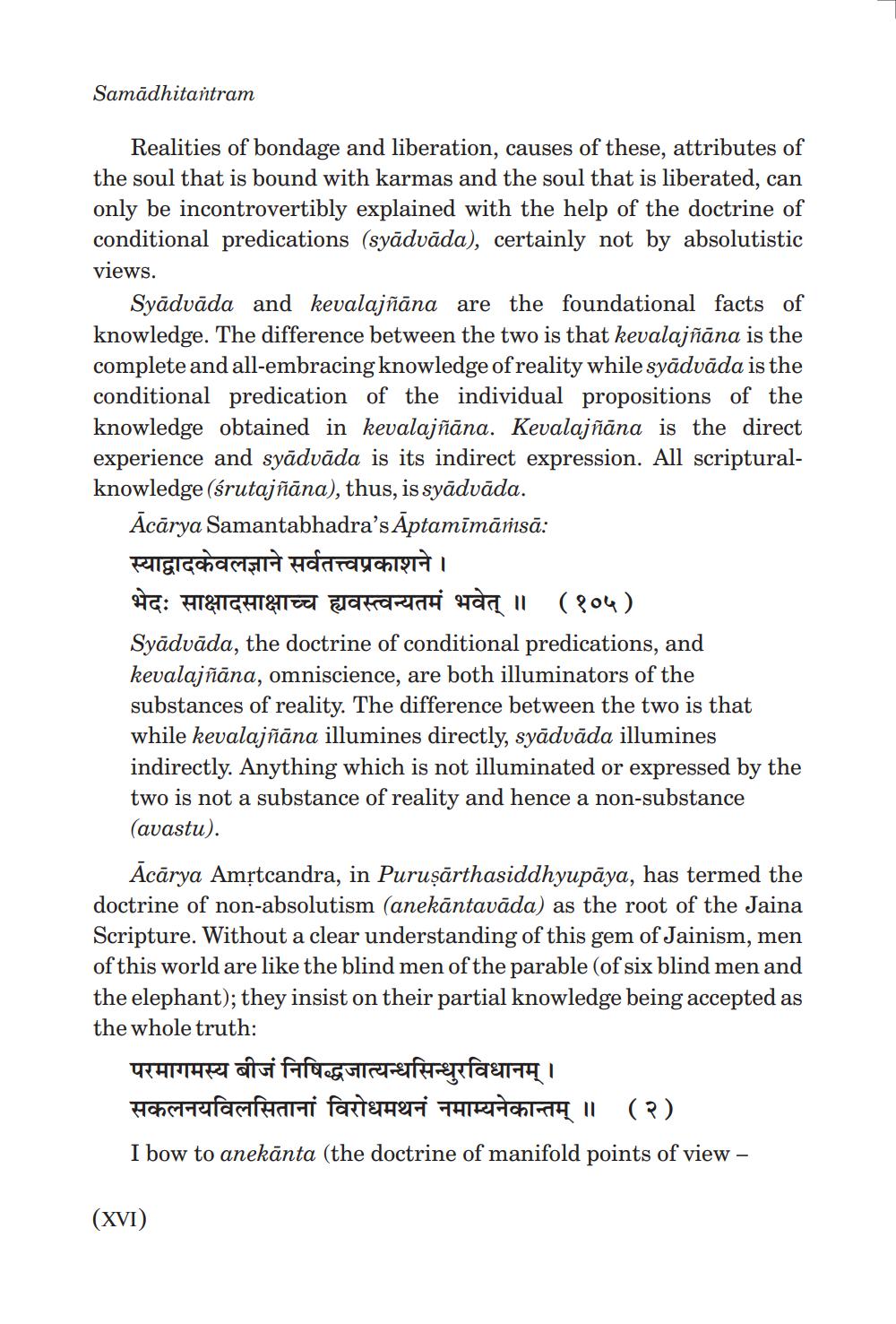________________
Samādhitantram
Realities of bondage and liberation, causes of these, attributes of the soul that is bound with karmas and the soul that is liberated, can only be incontrovertibly explained with the help of the doctrine of conditional predications (syādvāda), certainly not by absolutistic views.
Syādvāda and kevalajñāna are the foundational facts of knowledge. The difference between the two is that kevalajñāna is the complete and all-embracing knowledge of reality while syādvāda is the conditional predication of the individual propositions of the knowledge obtained in kevalajñāna. Kevalajñāna is the direct experience and syādvāda is its indirect expression. All scripturalknowledge (śrutajñāna), thus, is syādvāda.
Ācārya Samantabhadra’s Āptamīmāṁsā: स्याद्वादकेवलज्ञाने सर्वतत्त्वप्रकाशने।
TG: HTIGHETER Tatrariae Haal (804) Syādvāda, the doctrine of conditional predications, and kevalajñāna, omniscience, are both illuminators of the substances of reality. The difference between the two is that while kevalajñāna illumines directly, syādvāda illumines indirectly. Anything which is not illuminated or expressed by the two is not a substance of reality and hence a non-substance (avastu).
Acārya Amstcandra, in Puruşārthasiddhyupāya, has termed the doctrine of non-absolutism (anekāntavāda) as the root of the Jaina Scripture. Without a clear understanding of this gem of Jainism, men of this world are like the blind men of the parable (of six blind men and the elephant); they insist on their partial knowledge being accepted as the whole truth:
परमागमस्य बीजं निषिद्धजात्यन्धसिन्धुरविधानम् । सकलनयविलसितानां विरोधमथनं नमाम्यनेकान्तम् ॥ (२) I bow to anekānta (the doctrine of manifold points of view -
(XVI)




